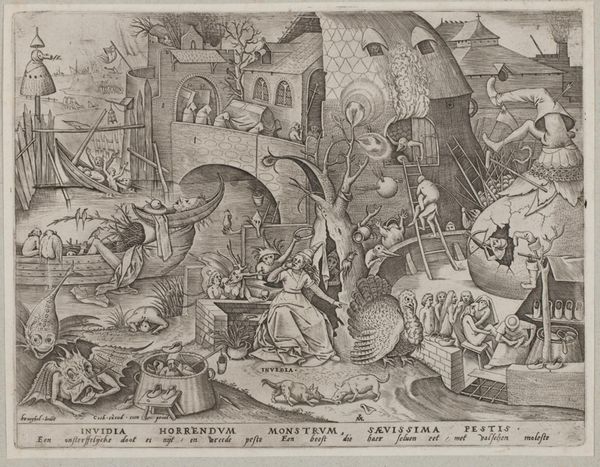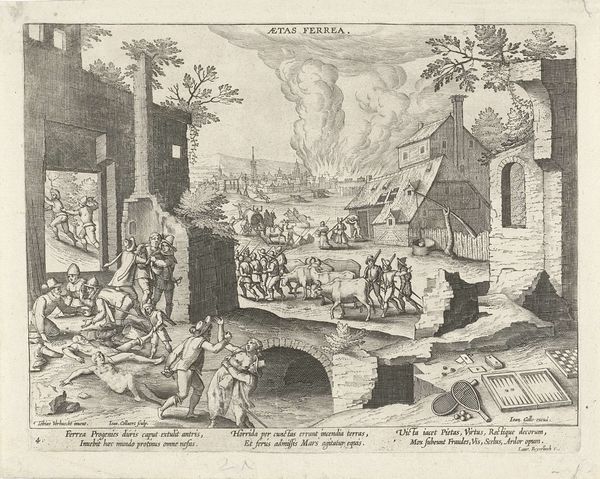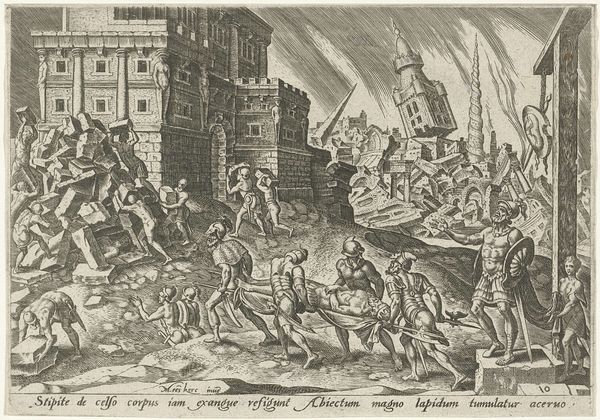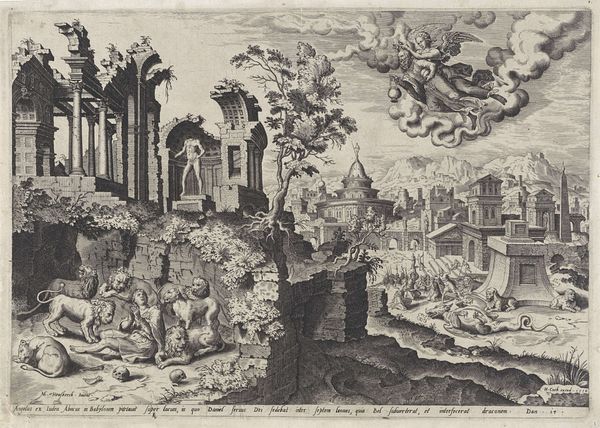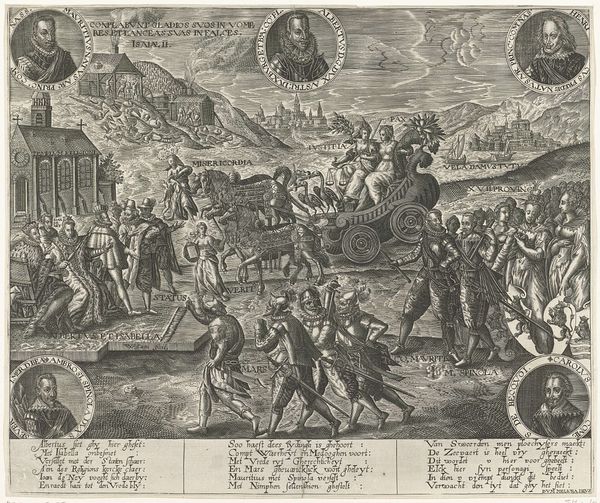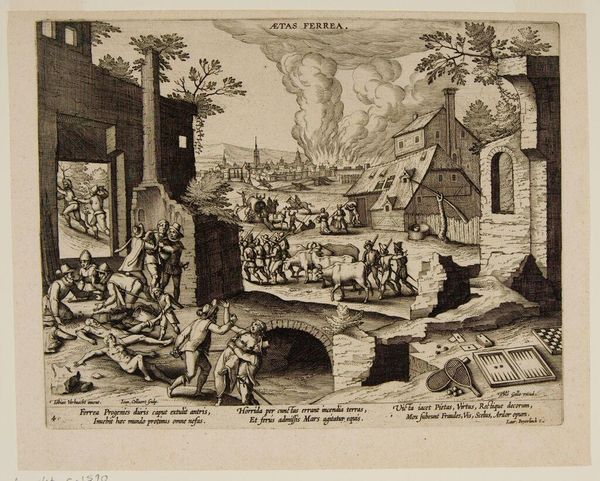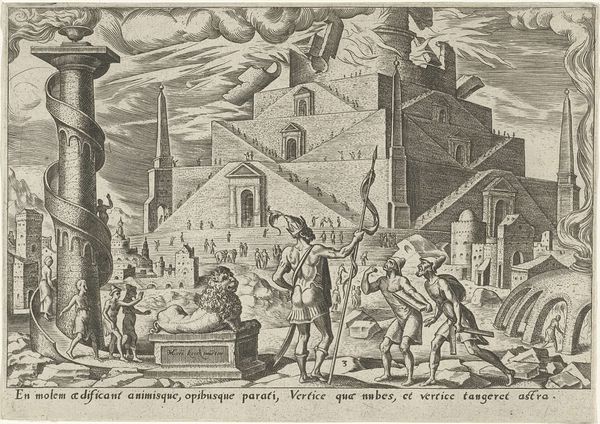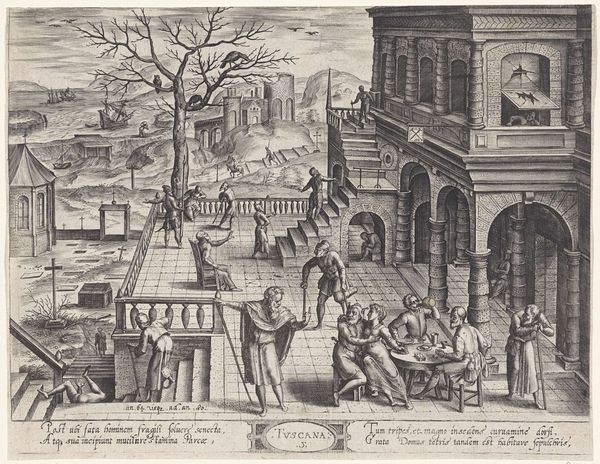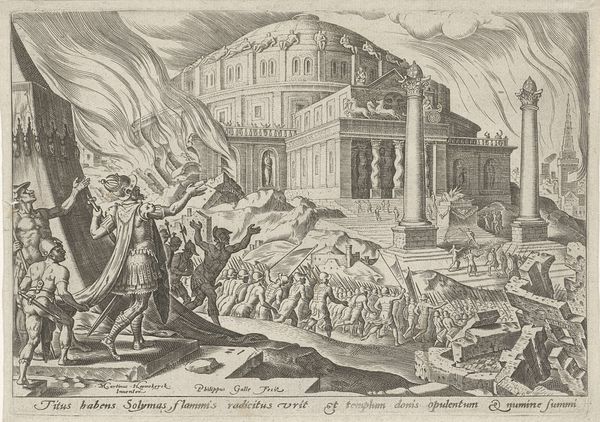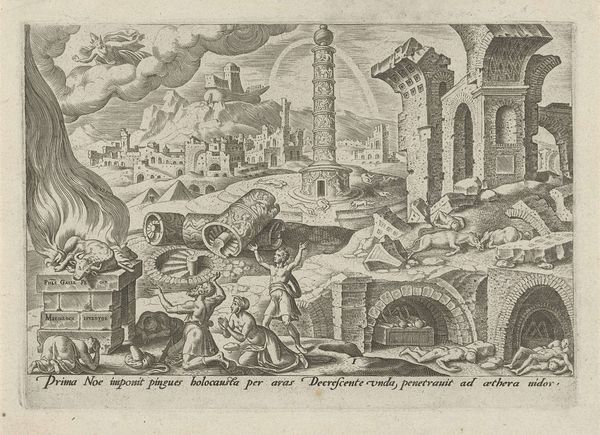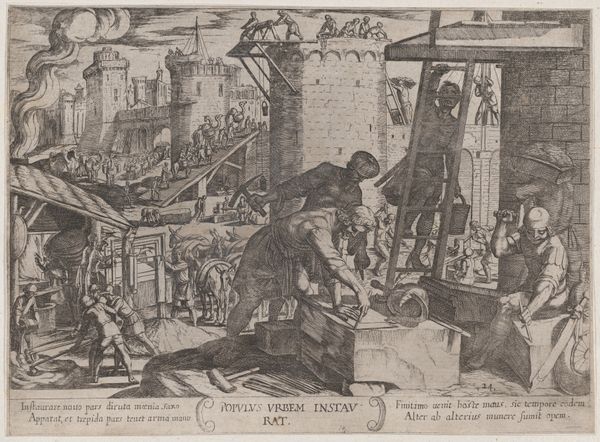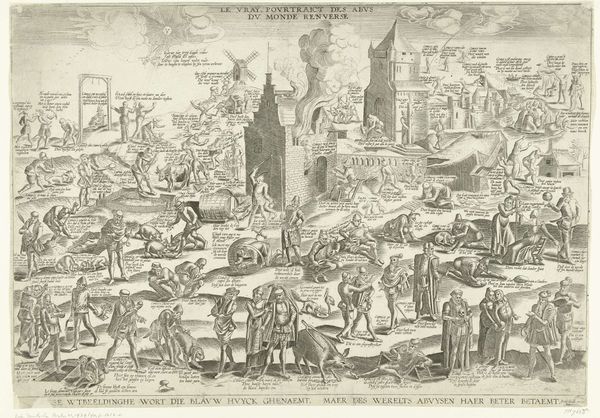
print, engraving
#
pen drawing
# print
#
old engraving style
#
landscape
#
mannerism
#
figuration
#
line
#
cityscape
#
history-painting
#
northern-renaissance
#
engraving
Dimensions: height 141 mm, width 202 mm
Copyright: Rijks Museum: Open Domain
Philips Galle's engraving, "The Destruction of the Tower of Babel," produced sometime in the late 16th century, captures a pivotal moment of divine retribution. Galle was working during the Protestant Reformation, a time of intense religious and political upheaval, and this context deeply informs the work. The Tower, a symbol of human arrogance, crumbles under the weight of divine judgment. But consider how this narrative resonated with the anxieties of the time. The Tower becomes a metaphor for religious conflict, for the disruption of social order. Galle uses the tale of Babel to comment on the fracturing of religious authority and the ensuing chaos. The architecture of Babel itself becomes a stage for exploring themes of power, obedience, and the consequences of dissent. The emotional weight of this piece lies in its depiction of destruction, but perhaps also in a subtle questioning of authority. It reminds us that grand narratives often mask complex human struggles.
Comments
No comments
Be the first to comment and join the conversation on the ultimate creative platform.


